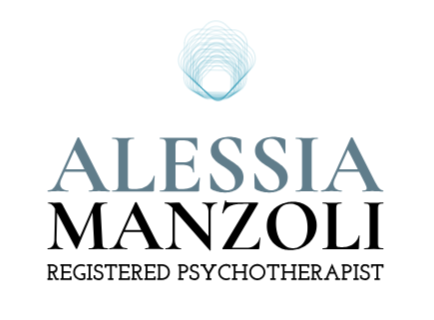Working With the Stories That Keep Us Stuck
We all carry our own version of them: our own stories.
The ones that exist beneath the surface.
The ones that tell us who we are allowed to be.
They can sound like:
“I don’t matter.”
“My voice isn’t important.”
“I am not enough.”
“I’m not lovable.”
They feel like truths, but they’re really not.
They’re actually our limiting beliefs. Narratives we internalize in our most challenging moments, often without even realizing it.
What Is a Limiting Belief?
A limiting belief is a story we learn about ourselves, others, or the world. We tend to accept these beliefs as truth, even though they are false, distorted, or incomplete. They often lack compassion and instead reinforce fear, self-doubt, or shame. They can even restrict our potential by placing invisible boundaries around what we think we can do, be, or have.
In many ways, a limiting belief is like an unconscious contract we sign with ourselves. Without even realizing it, we agree to the terms of the belief, committing to its version of truth. As a result, we start behaving accordingly. We may reject opportunities, sabotage relationships, or avoid change. We become loyal to it, and reject anything that challenges or contradicts the story we’ve signed onto. Until we consciously revisit and renegotiate that contract, it continues to define the limits of our lives.
Where Do They Come From?
These narratives often take root in early experiences, cultural conditioning, or messages we absorb. Many times it is so subtle that we don’t even realize it.
This happens because our brains are naturally wired for survival. As part of their protective design, they are constantly scanning for danger (whether real or perceived), especially when we are younger and more vulnerable. Once our brain identifies a threat, it works hard to avoid facing it again in the future. This is why painful, embarrassing, or shaming experiences tend to stick with us so tightly. The brain holds onto them as a form of protection.
While this protective mechanism is well-intentioned, it can also lead to the formation of limiting beliefs that keep us trapped in patterns that are more about safety than growth.
For example:
If you once spoke up and were not received well, your nervous system might have concluded: “It’s safer to stay quiet.”
From this, the belief can become:
“My voice doesn’t matter.” or “Taking up space is unsafe.”
These beliefs may have protected you in certain unsafe environments, but when they start running your whole life, they become cages, not shields.
How Do We Begin to Release Our Stories?
Releasing isn’t about denying or forcing something away.
Rather, lasting change requires us to build awareness, lean into compassionate acceptance, and take small and consistent actions.
Here are some ways to begin transforming and releasing your limiting beliefs:
1. Make the choice to begin
No change happens without your permission. Start by simply choosing to become curious about what might be holding you back. There’s nothing wrong with you for having this outdated narrative. There’s only an opportunity to meet yourself with love, and free yourself from it!
2. Notice the pattern
Start to observe when you feel small, shut down, or “not enough.”
From a place of curiosity, rather than judgment, ask yourself: “What am I believing about myself right now?”
3. Feel it in the body
Our beliefs don’t just live in the mind. We actually store them in the body. Noticing how our body or energy shifts can help us stay connected to ourselves, and can help release some of the physical tension we may carry with these stories.
So, when a limiting thought arises, pause. Notice. Where do you feel it? Does it show up as a tightness? A shut down? A heaviness? Is there a particular body part that suddenly feels achey, painful, or tight?
Make space for your body to tell you what is happening, as it is a great source of inner wisdom.
4. Meet yourself with compassion
This step can feel unfamiliar or difficult at first, and that’s absolutely okay.
It’s important not to add more shame to the story you’re already carrying. After all, this narrative came from a real, painful place. At one time, it helped you. It kept you safe and protected.
As an example of compassion, you can try gently saying to yourself:
“It makes sense that I learned this. I don’t need to shame myself for it. And now, I’m ready to let it go.”
5. Recognize your behaviours
Notice how you act when you’re living out that belief.
Do you find yourself engaging in self-defeating behaviours, avoiding challenges, or shutting down opportunities?
Are you stuck in a closed or judgmental mindset that resists change?
Begin to see these behaviours as clues or patterns linked to your limiting belief.
6. Shift into a curiosity mindset
Once you recognize these behaviours, gently invite yourself to explore a different perspective. Ask yourself questions from a place of curiosity.
For example:
How would I show up if I believed something more empowering about myself?
What’s one small thing I’m willing to try today that challenges this belief?
“When you change the way you look at things, the things you look at change.”
Final Thoughts
You are not the beliefs you once adopted to survive.
There is nothing more powerful than choosing yourself, gently and consistently… especially in the places you were once taught to reject yourself.
You are allowed to evolve. To expand. To rewrite the story, and to sign a new contract with yourself, this time committing to returning to your True Self.
If you need any extra support with this, please reach out for a 15 minute consultation, or check out my Downloadable PDF: Journal Prompts for Limiting Beliefs
With warmth,
Alessia Manzoli
Registered Psychotherapist


